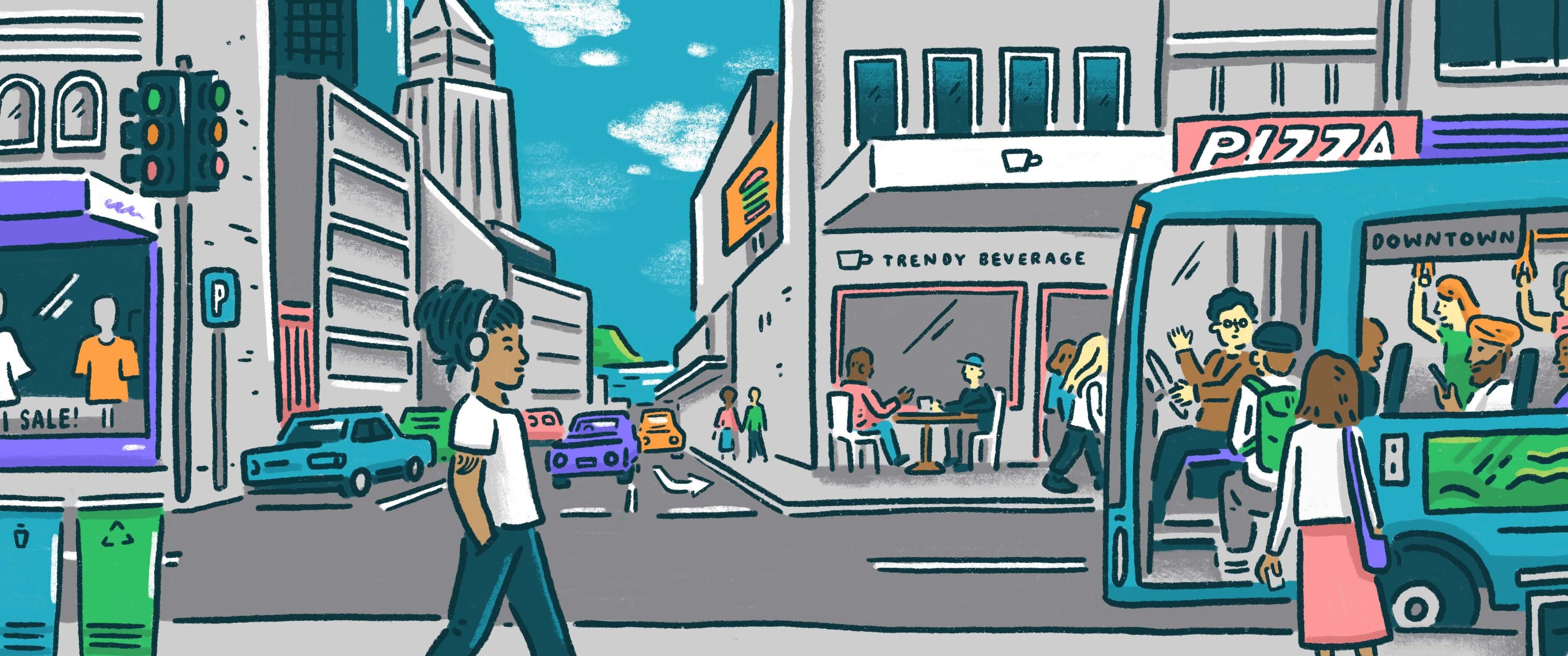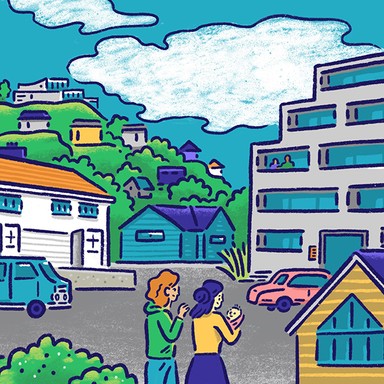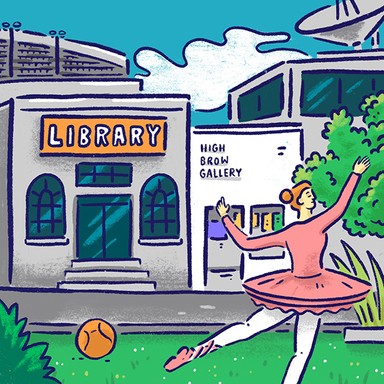
Palmerston North City Council

Rates and revenue
The work of local government is funded mainly by property taxes in the local area, known as rates. This makes up around 60% of council expenditure, with the rest coming from user charges, investment income, regulatory fees and roading subsidies. Councils can also borrow money to spread the cost of large investments such as infrastructure over a longer period of time.

Rates and revenue
The work of local government is funded mainly by property taxes in the local area, known as rates. This makes up around 60% of council expenditure, with the rest coming from user charges, investment income, regulatory fees and roading subsidies. Councils can also borrow money to spread the cost of large investments such as infrastructure over a longer period of time.
Review how rates are calculated, and enact a policy of capping rate increases. And ensure that rate increases are fairly distributed.
Work with the central government to develop a better, more sustainable alternative to the current rating system.
Insist that all projects are assessed on a cost-benefit ratio and that projects have tangible benefits to the community.
Capital based system.
Keep supporting Palmerston North airport board for their real estate development project.
Adjust council budgets to ensure they comply with the limits set in council's finance and funding policy.
Continue the rates review and implement a capital based rates system.
Introduce an affordability component in council policy that caps the maximum rates increase to the average wage increase in our community.
Transition to capital value rating system from July 2024, and establish a targeted rate for private properties left vacant or undeveloped.
Establish a targeted rate to raise investment to reduce emissions, analogous to the successful initiative in Auckland.
Reduce the proportion of revenue required from rates by restoring the airport dividend and creating revenue from all-day commuter parking.
Invest in hemp farm and processing with another local investor to ease start-up cost but hold 50% of shares, industry and investment.
Support rates cap for two years to ease burden of cost of living crisis. Trim the fat where necessary.
Stop spending money on consultants and go straight to an experienced source for all future projects.
Ensure the council's long term position is sustainable and that there is financial capacity and partnerships to fund future programmes.
Support timely provision of new infrastructure that builds capacity and enables the city to harness new development opportunities.
Recognise inter-generational funding requirements and manage debt within defined levels.
Ensure rates are affordable for our community.
Need to ensure that we balance our accounts in terms of spend and income. We need to look for new ways to increase income for the council.
We need to reduce council debt.
Freeze rate increases for homeowners for 2 years.
Conduct an audit and report all income and expenditure for the city for the last 3 financial years to the public. Obtain feedback.
Secure income streams for the city outside of rates, parking tickets and fees.
Go through council's budget line by line to reduce or defer "nice to have" spending, such as putting LED lights over the Fitzherbert Bridge.
Cut back on "budget creep" where internal groups or funding committees budgets have grown beyond what they effectively need to operate well.
Ensure rate increases are as low as possible, inflation increases the costs of essential services, we can't operate "business as usual."
Encourage greater transparency as to where are rates go.
Insist on greater accountability on rate payers money.
Foster a better partnership between council and ratepayers.
Look for long term investment opportunities for the council so that their dependency on rates reduces.
Utilise technology to allow future cost savings in some infrastructure projects.
Look long term on the debt and high inflation costs and see what we can look at reducing.
Transition to capital value rating system from July 2024, and establish a targeted rate for properties left vacant.
Establish a targeted rate to incentivize investments that reduce emissions.
Explore alternative methods of revenue gathering, to reduce the impact of raising rates on the community.
Advocate for a change to Capital Value rating system to ensure a fairer distribution of rates in line with ability to pay.
Advocate for an increase in government funding for local government services through a share of GST for example.
Keep council debt within acceptable limits, while making sure we invest in infrastructure upgrades to maintain our assets.
Deliver value for money decisions for ratepayers.
Diversify the council's revenue streams.
Reduce the council's debt and over-reliance on rates by investing in opportunities.
Commit to ensuring council invests in owning and managing the resources required to operate as to eliminate outside profit within procurements.
Commit to maximise rates usage by employing required skilled council workers for all applications and saving by eliminating contractor profits.
Ensure that a fair percentage of rates is available for the evolution of new broad-range community-enhancing initiatives for the future.
Support a rating review, with the possibilities including a mix of land value and capital value rates, not just one or the other.
Provide enough development capacity to meet expected demand for housing and business in the short, medium and long term.
Increase capacity for external organisations to deliver initiatives that enhance the cultural, economic, and social wellbeing of the city.
Balance rates with the maintenance of quality public services without over or under-spending.
We must carefully balance revenue (rates) and investment. Annual budget debates must be thorough and include the views of the community.
Advocate for equitable investment across our whole city. Some parts of our community receive a lower share of investment.
Council must live within its means, but must not under invest in its core infrastructure.
Review how rates are calculated, and enact a policy of capping rate increases. And ensure that rate increases are fairly distributed.
Work with the central government to develop a better, more sustainable alternative to the current rating system.
Insist that all projects are assessed on a cost-benefit ratio and that projects have tangible benefits to the community.
Capital based system.
Keep supporting Palmerston North airport board for their real estate development project.
Adjust council budgets to ensure they comply with the limits set in council's finance and funding policy.
Continue the rates review and implement a capital based rates system.
Introduce an affordability component in council policy that caps the maximum rates increase to the average wage increase in our community.
Transition to capital value rating system from July 2024, and establish a targeted rate for private properties left vacant or undeveloped.
Establish a targeted rate to raise investment to reduce emissions, analogous to the successful initiative in Auckland.
Reduce the proportion of revenue required from rates by restoring the airport dividend and creating revenue from all-day commuter parking.
Invest in hemp farm and processing with another local investor to ease start-up cost but hold 50% of shares, industry and investment.
Support rates cap for two years to ease burden of cost of living crisis. Trim the fat where necessary.
Stop spending money on consultants and go straight to an experienced source for all future projects.
Ensure the council's long term position is sustainable and that there is financial capacity and partnerships to fund future programmes.
Support timely provision of new infrastructure that builds capacity and enables the city to harness new development opportunities.
Recognise inter-generational funding requirements and manage debt within defined levels.
Ensure rates are affordable for our community.
Need to ensure that we balance our accounts in terms of spend and income. We need to look for new ways to increase income for the council.
We need to reduce council debt.
Freeze rate increases for homeowners for 2 years.
Conduct an audit and report all income and expenditure for the city for the last 3 financial years to the public. Obtain feedback.
Secure income streams for the city outside of rates, parking tickets and fees.
Go through council's budget line by line to reduce or defer "nice to have" spending, such as putting LED lights over the Fitzherbert Bridge.
Cut back on "budget creep" where internal groups or funding committees budgets have grown beyond what they effectively need to operate well.
Ensure rate increases are as low as possible, inflation increases the costs of essential services, we can't operate "business as usual."
Encourage greater transparency as to where are rates go.
Insist on greater accountability on rate payers money.
Foster a better partnership between council and ratepayers.
Look for long term investment opportunities for the council so that their dependency on rates reduces.
Utilise technology to allow future cost savings in some infrastructure projects.
Look long term on the debt and high inflation costs and see what we can look at reducing.
Transition to capital value rating system from July 2024, and establish a targeted rate for properties left vacant.
Establish a targeted rate to incentivize investments that reduce emissions.
Explore alternative methods of revenue gathering, to reduce the impact of raising rates on the community.
Advocate for a change to Capital Value rating system to ensure a fairer distribution of rates in line with ability to pay.
Advocate for an increase in government funding for local government services through a share of GST for example.
Keep council debt within acceptable limits, while making sure we invest in infrastructure upgrades to maintain our assets.
Deliver value for money decisions for ratepayers.
Diversify the council's revenue streams.
Reduce the council's debt and over-reliance on rates by investing in opportunities.
Commit to ensuring council invests in owning and managing the resources required to operate as to eliminate outside profit within procurements.
Commit to maximise rates usage by employing required skilled council workers for all applications and saving by eliminating contractor profits.
Ensure that a fair percentage of rates is available for the evolution of new broad-range community-enhancing initiatives for the future.
Support a rating review, with the possibilities including a mix of land value and capital value rates, not just one or the other.
Provide enough development capacity to meet expected demand for housing and business in the short, medium and long term.
Increase capacity for external organisations to deliver initiatives that enhance the cultural, economic, and social wellbeing of the city.
Balance rates with the maintenance of quality public services without over or under-spending.
We must carefully balance revenue (rates) and investment. Annual budget debates must be thorough and include the views of the community.
Advocate for equitable investment across our whole city. Some parts of our community receive a lower share of investment.
Council must live within its means, but must not under invest in its core infrastructure.
Mayor
Compare the mayoral candidates in your area
Local council
Compare the candidates for your city or district council
Regional council
Compare the candidates for your regional council
Local board
Compare the candidates for your local or community board







